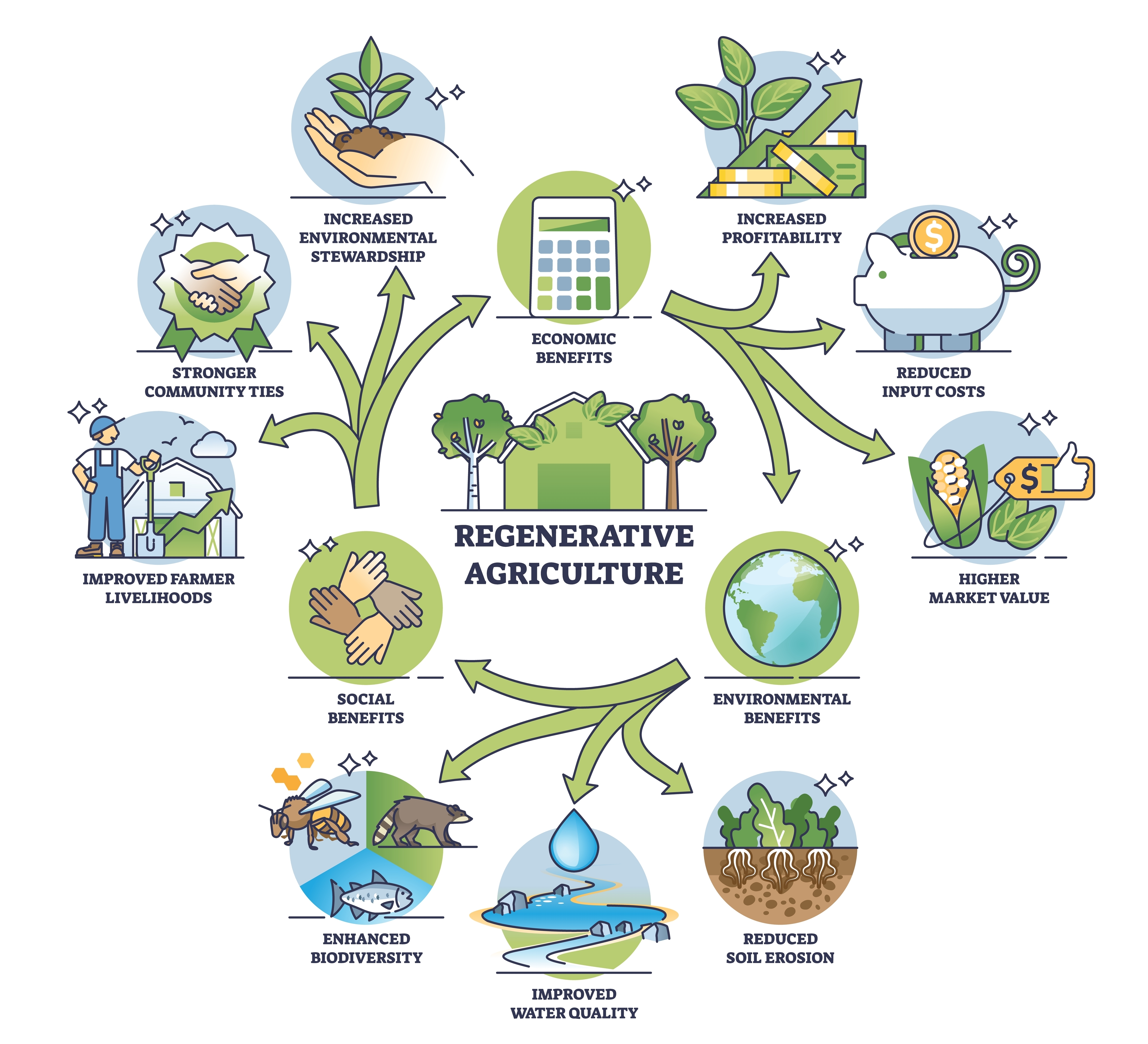 Carbon farming is being embraced as an effective method for agricultural lands to sequester carbon dioxide from the atmosphere—California alone is estimated to have potential to sequester more than 60 million metric tons of CO2 annually by 2030. But beyond its impact on the environment and the planet, carbon farming is already proving to create co-benefits of more immediate and tangible value for farmers themselves. Carbon Faming, also known as regenerative agriculture, is creating healthier, more productive lands, and saving farmers and landowners money.
Carbon farming is being embraced as an effective method for agricultural lands to sequester carbon dioxide from the atmosphere—California alone is estimated to have potential to sequester more than 60 million metric tons of CO2 annually by 2030. But beyond its impact on the environment and the planet, carbon farming is already proving to create co-benefits of more immediate and tangible value for farmers themselves. Carbon Faming, also known as regenerative agriculture, is creating healthier, more productive lands, and saving farmers and landowners money.
Evidence continues to emerge that farmers are seeing real monetary benefits from implementing regenerative practices. An extensive study involving more than 100 farmers found farmers who switched from conventional to regenerative agriculture experienced a 15-25% increase in profitability. Another study published in 2023 concluded that net farm incomes for farmers using regenerative techniques increased by $65 per acre on average—one successful farmer saw an income increase of $425 per acre. This profitability is thanks to a combination of lower costs and higher productivity.
Regenerative practices save farmers money by using less of the materials needed to conduct farm operations. Look at tillage practices as an example. Using continuous conventional tillage practices consumes an average of six gallons of diesel fuel for each acre annually. A continuous no-till approach, however, consumes less than two gallons per acre. Nationwide, this amounts to almost 282 million gallons conserved annually, resulting in thousands of dollars in fuel costs saved—and these savings only grow when fuel is more expensive.
The data doesn't end there. Planting cover crops has shown to be an effective approach for many farmers in minimizing weed growth and creating savings from reduced herbicide use. Farmers have also saved money on pesticides as regenerative techniques supporting reduced or no-till farming also boost soil's water retention capacity over time, creating savings from reduced water consumption, particularly during times of drought.
Regenerative agriculture saves farmers time as well as money. Take the example of tillage practices again: a farmer working 15 acres per hour would eliminate nearly 67 hours of work for each eliminated pass over 1,000 acres by employing a no-till or reduced-till approach. This can lead to thousands of dollars more in savings each year (dependent on labor and equipment maintenance costs).
Other strategies also save time and labor costs. Planting cover crops reduces field maintenance requirements by keeping weed growth down and preventing soil from washing away. Controlling local pest populations reduces the need to spend time treating crops for pests and diseases. Exact figures vary between different crops, but the savings add up.
Alongside lower costs of operation, regenerative agriculture is making farms more profitable by making them more productive. Improvements to soil health boost crop yields at exponential rates the longer they are maintained. Farmers using cover crops reported that yields of soybeans, as an example, increased by an average of 2.1% in one year, up to 5% after three. The impact is even bigger in drought conditions: figures from 2012 found cover crops boosted soybean yields an average of 11.4% after just one year.
Regenerative agriculture is proving itself a worthwhile investment for farmers across the country. The variety of techniques allows farmers working with different crops in different conditions to utilize what works best for them and provides multiple ways to cut costswhile creating a healthier, more productive farm. Explore the additional sections of our carbon farming center to learn more about specific techniques, gain access to other regenerative agriculture resources, and learn more about the different funding resources available to help you implement the regenerative agriculture approach
